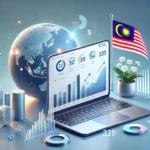-
Understanding Realism Art: A Deep Dive into Descriptive Art, written by Laiba Imran
Art has the power to evoke emotions within you. It begins a journey inside, where you discover something beyond commercial life.
It happens in all art forms of the art,s but when it is about paintin,g it has a different experience where most people are observed as:
- Being lost in the painting while gazing.
- Feel like as could step right into it, immersion taking place inside.
This immersive experience is the kind of Realism Art.
It is a captivating genre.
Bringing the beauty and complexity of our inner world to life through:
- Meticulous detail
- Emotional depth
Realism Art: What is Descriptive Art?

- Descriptive art primarily focuses on complete representation.
- Aiming to depict a theme with clarity and detail.
- It often aims to portray reality by capturing deep details:
- Colors
- Textures
- Expressions
- This allows individuals to experience the essence of the subject matter without doubt.
- Descriptive art transcends mere replication; it:
- Provokes emotions
- Tells stories
- Emphasizes cultural or personal differences
Realism Art: Important Characteristics of Descriptive Art
Realism
- This art form emphasizes naturalistic depiction.
- Aligning with the principles of Realism, Art, and Hyperrealism within art movements.
- It strives for authenticity in its representation.
Detail-Oriented
- Every component is meticulously rendered, from the sparkle in an eye to the patterns and structure of the fabric. This attention to detail is a hallmark of descriptive art.
Narrative Element
- Through visual components, descriptive art often:
- Tells a story
- Conveys a message
- This storytelling aspect:
- Engages viewers.
- Encourages them to connect with the artwork.
Emotionally Expressive
- While descriptive, the art also:
- Evokes emotions
- Connects viewers to the subject’s theme
- This emotional resonance makes the artwork more impactful.
Representation
- Descriptive art can represent both figurative and abstract ideas.
- Usually conveying emotions or telling a story through detailed representation.
Realism Art: Various Forms of Descriptive Art
- Realism Art was an influential art movement focused on accurately representing subjects without idealization.
- Notable figures in this movement include:
- Gustave Courbet
- Jean-François Millet
- Honoré Daumier
Naturalism
- Similar to realism, naturalism emphasizes a detailed portrayal of the natural world.
- Focusing on the exact representation of:
- Light
- Shadow
- Perspective
Portraiture
- This genre involves creating detailed representations of individuals.
- Capturing their likeness and personality, as seen in the works of:
- John Singer Sargent
Landscapes
- Descriptive landscape art emphasizes the precise and beautiful representation of nature, exemplified by artists like:
- Thomas Cole
- Claude Monet
Still Life
- This genre represents lifeless objects arranged in a visually captivating manner.
- Highlighting texture, color, and form, as seen in the works of artists like:
- Juan Sánchez Cotán
- Paul Cézanne
Realism Art: Conclusion
- Descriptive art plays an essential role in;
“Expressing the beauty and complexity of the world.”
- By emphasizing Realism Art and attention to detail;
- It allows individuals to connect deeply with the theme.
- Provoking feelings and igniting imagination.
- Descriptive art encourages us to appreciate the intricacies of life and the artistic connections in depiction through various forms such as:
- Landscapes
- Portraits
- Still life
FAQ about Realism Art
What is the difference between realism and naturalism in art?
- Realism focuses on depicting subjects without idealization.
- Naturalism emphasizes a detailed and faithful portrayal of the natural world, including:
- Light
- Shadow
- Perspective
Who are some of the most famous artists associated with Realist art?
- Notable figures include:
- Gustave Courbet
- Jean-François Millet
- Honoré Daumier
- They are recognized for their significant contributions to the realism movement.
How does descriptive art evoke emotions?
- Descriptive art uses detailed representations and narrative elements.
- Creating emotional connections between the:
- The Viewer
- The subject
- Enhancing the overall impact of the artwork.
Can descriptive art represent abstract ideas?
- Yes, descriptive art can represent both figurative subjects and abstract concepts.
- Often conveying emotions or narratives through detailed visual representations.
Why is detail important in descriptive art?
- Detail enhances the realism of the artwork.
- Allowing viewers to engage with the piece more deeply and appreciate the complexity of the subject matter.
Are you ready to explore the profound beauty of realism art, (read more about Realism Art)?
- Dive into the world of descriptive art and discover how it can transform your perception of reality.
- Share your thoughts on your favorite realism artworks in the comments below!







